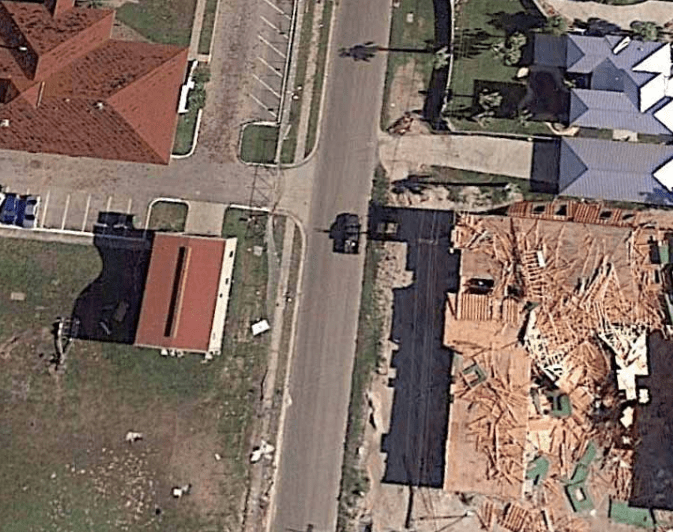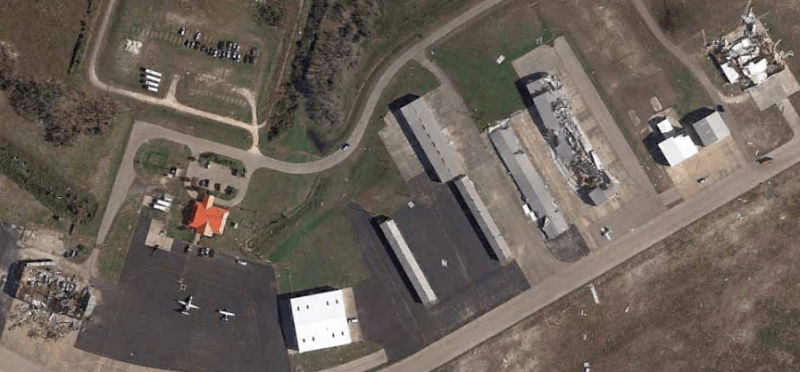Yea, I'm not buying the professor and his localized bands theory at all. Buildings that collapse tend to have more than just one problem going on. And the problem imo is rarely that the building just happened to get hit by a wind band that none of the other buildings got hit by. Hurricanes produce gusting winds. Eventually everybody gets hit by them. And even more rare would be that ANY of those buildings were actually hit by wind pressures that were strong enough to cause them to collapse if they had been properly designed. Lets say everything has a minimum FS of 1.5. In reality it is much higher closer to 2.0. Lets say you are in a 130 mph area. Only if you get hit by the eye-wall are you likely to ever in your lifetime feel those winds. And lets say the building is hit by the eye-wall of a 130 mph storm. Well that shouldn't knock it down either cause with a 1.5 FS the building should withstand 159 mph. My point is that even if he is correct. And some buildings were being hit by higher wind pressures. I doubt the higher wind pressures exceeded the code. We've got to stop making excuses for poor design and craftsmanship.
More likely the building had a weak spot. Or the envelope got punctured and pressurized. I still see brand new buildings go up without any gabled end bracing.....duh! Most likely the buildings in those pictures had an unstable load path somewhere to begin with.
Also the discussion about whether or not 1.03 is "OK" I say it is. Because everything we design has a factor of safety of almost 2.0 by the time you account for how everything is inflated in the whole process. Even the loads we choose to apply to the design are most likely to never be felt by the building in its entire existence. And while I do usually go to pains to say under 1.0 it has been pretty rare where I haven't been able to make 1.03 turn into 0.98 simply by sharpening my pencil on the loading side of things. I don't design to a gnat's ass to begin with. If you end up with a building that has fallen down I promise you that you will find a different reason it fell down other than one member being over-stressed by 1.03. If a lawyer is trying to pin a failure on someone because of a 1.03 overstress than he or she has a losing case. Cause surely there will be something much more glaring like a load path problem, a different overstress of say 1.5 somewhere else. Once in the case of a ToysRus the roof collapsed because a guy went up onto the roof with a bobcat and pushed all the snow from one side of the roof to another side of the roof until it caved in. My argument is that you aren't ever going to end up in a court room because of a 1.03 overstress. Nobody is getting singled out over that. And you won't find a lawyer able to win the case on a 1.03 overstress. Because a 1.03 overstress is NEVER going to lead to a failure.
The lawyers don't really feel comfortable arguing engineering anyways. I was involved in a project that had numerous overstress issues. In numerous places the building would have collapsed during construction. The job got shut down. New engineers were hired to fix it. Four different engineers concurred that the numbers were bad bad bad. Myself, another engineering company taking half the job, the state investigation engineer, and another engineer hired by the lawyers to check it. I remember discussing the case with the lawyers. Their eyes would glaze over. They were so scared of the engineering they first went after the money arguing contractual issues and failure to perform. We had to throw away a million dollars worth of steel and replace it due to bad design work. I'm talking overstresses of 5.0 and the construction lawyers seemingly didn't want to go there unless they had to. It was the craziest thing. Sad thing is the board of engineers slapped the engineer on the wrist five years after the fact. He relinquished his license in our state to avoid re-education. Good Luck, Indiana..... I honestly don't think the guy ever was involved in the project. In fact I don't think the project was ever finished. And I'm guessing someone forced him to seal it saying they'd fix it later which they never did. I met the guy a few times during the project and I don't think he knew anything about it. During the trial we got to see their calculations. There weren't very many lets put it that way. But I don't think the guy knew what he was doing either. Cause if he did, he would have stopped the project himself.
Regarding metal buildings. I've done some approval work for various companies in the past. You'd be surprised at how often their metal panel load tables are full of mistakes. So I'm guessing if they aren't getting the simple stuff correct I seriously doubt their software is flawless. When you read through the AISI you see all these clauses and exceptions to make things more aggressive brought to you by the metal building industry research money. And yes a lot of what they do just ends up pushing the mass of the building into the foundations. I don't believe they care so much if a building fails because they will just blame the foundation engineer. I've even seen them bully engineers into using uplift factor of safeties as low as 1.1. A contractor once complained about my foundation design so I said he could hire an engineer to design the foundation if he wanted to. He did, and then I got the drawings and I called the guy up. He just said, he kept getting beat up about it and got tired of people complaining. He was using the slab, foundations, everything but the furniture, and only applying a 1.1 factor of safety. Cause technically it hasn't been codified. Some will argue it should be 1.5 or 1.67. I told him to use a factor of safety of at least 1.5 and redo it. Surely if you are using a 1.1 factor of safety and you are relying upon the 20 or 30 feet of slab to pick up with your column, you are going to crack your slab in a hurricane doing things like that.
But yea without a proper foundation design and anchorbolt design the things will just fall right down. So many people cut the slabs, or don't use WWF in the slabs, etc... Not a fan of those buildings in general. Just too many people out there who don't understand how they work.
I think the human race gets lucky a whole lot if I'm being honest. That and the code does have a large factor of safety that covers up a lot of human error. Human error isn't actually part of the factor of safety. We end up with a lot of bad engineering and or construction because people THINK the over design (ie the factor of safety) is there to account for human error.
John Southard, M.S., P.E.




